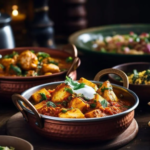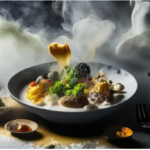Introduction
With a long history and varied cultivation, India is a global powerhouse in the spice industry, accounting for the majority of the worldwide production, consumption, and exports of these aromatic goods. An important economic engine, the spice sector boosts the country’s GDP and foreign exchange reserves. The spice industry has experienced a technical revolution in recent years, as improvements in supply chain management, Processing Plants and agriculture have raised the calibre and volume of spices produced and cemented India’s leadership in the global market.
A turnkey processing plants for spice provides a full solution that includes design, equipment installation, and training for operators. Professionals carefully organise the arrangement, taking into account things like product selection, capacity, and hygienic requirements. Modern equipment is smoothly integrated, from grading and cleaning to grinding and packaging. For optimal efficiency, the process is optimised to minimise product loss and maximise production. Additionally, knowledgeable specialists offer guidance on-site, enabling the plant’s staff to function independently. A turnkey setup of this kind is necessary to meet the strict food safety laws and match the needs of the competitive spice market while also attaining optimal quality, consistency, and hygiene.
Modern Industry Practices for Spice Manufacturing
Procurement of Raw Materials: Spices and Seeds
The best flavour and scent come from spices cultivated in Indian fields. Maintaining the quality control procedure at the production facilities is crucial. Drying is crucial to the production of premium spices. The degree of perfection attained during the drying process has a significant impact on the outcomes of the subsequent manufacturing phases. Preserving the material’s taste and aroma requires careful drying. Sunlight normally dries the material, but if necessary, roasting is done to preserve the ideal moisture level.
Cleaning of Spices That Are Dried:
It is necessary to clean the produce before processing. The first step is to get rid of the stones, dirt, and dust. Spices and herbs can be cleaned of contaminants by rinsing them with a mild alkaline cleaning solution and neutralising agent, centrifuging them via counter-current zones, spray-rinsing, and drying.
A tank, hopper, or intermediate storage silo close to the Processing Plants area is used to hold clean, dry material. Pneumatic delivery of the stored material to the grinding machine allows for additional processing. Depending on the material, its properties, and the intended result, several pneumatic conveying techniques can be employed.
Grinding
Energy is used to break up large particles into smaller ones during the regular grinding of spices, preserving the flavour and colour of the final product. As energy is used to break the small particles into smaller ones, heat is produced during this process.
Either cryogenic or low-temperature processes are used to grind the spices. Heat is managed within safe bounds in the grinding chamber and throughout the milling system, using liquid nitrogen in the second scenario and cool air in the first. As a result, the finished spice powders have greater flavour, colour, and fragrance.
Spices are crushed in roller mills, hammer mills (horizontal and vertical), and other devices to reduce the material to the required size. Following grinding, materials with coarse and fine particles are handled pneumatically and transported to the mixing process, where all ingredients are combined in accordance with requirements.
Mixing and Blending:
Pneumatic connections between mixers and grinding equipment allow for the compression and mixing of spice powders to meet specific customer needs. This procedure is completely automated, just like the last one, and doesn’t need any operator involvement. Even with batch processes, the entire Processing Plants system is built to run continuously. When the mixing cycle is complete, the finished commodities are emptied into the little hopper, and the material is pneumatically transferred into the intermediate storage silo/tank.
Packaging:
Intermediate Bulk Containers (IBCs), jumbo bags, or 25 kg bags are excellent options if you wish to keep the final spice powders effective and incorporate them into consumer packaging with ease. To ensure that the material supplied to the customer is accurately weighed in its packaging, it is essential to choose the right automatic bagging equipment for finished goods after final mixing. The type of product for which the bagging machine is needed, the type of packaging material you want to use, and the throughput—or the quantity of bags that need to be filled each minute—must all be determined before choosing the right bagging machine. Before being shipped, the finished bags are then sewn or heat-sealed.
Conclusion:
From the procuring of the raw materials to the final packaging, the complete process of making spices is complex. It demands meticulous attention to detail in order to guarantee the greatest quality and consistency. This procedure is greatly improved by a turnkey spice Processing Plants factory that provides a wide range of services, such as design, equipment installation, and operator training. These facilities make sure that every process is optimised for effectiveness and product quality, from cleaning and grinding to mixing and packaging.
Spice makers can achieve superior spice production by investing in a turnkey Processing Plants system that combines cutting-edge technology and professional advice. This satisfies the high standards of the cutthroat spice business while also guaranteeing adherence to strict food safety laws. As a result, the product gains a competitive advantage and builds a solid reputation for excellence in the international spice market by being unique in both quality and quantity.




















